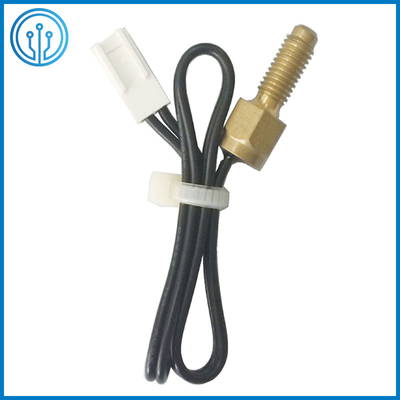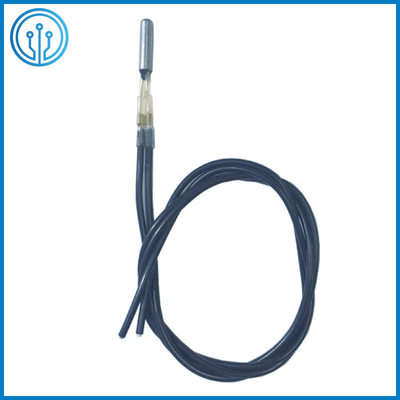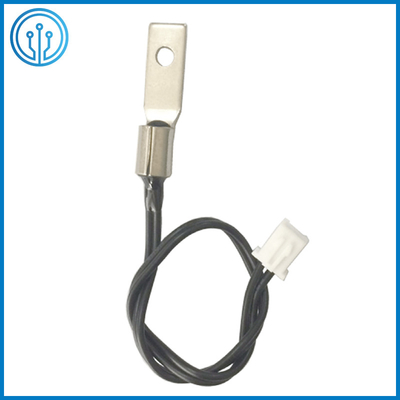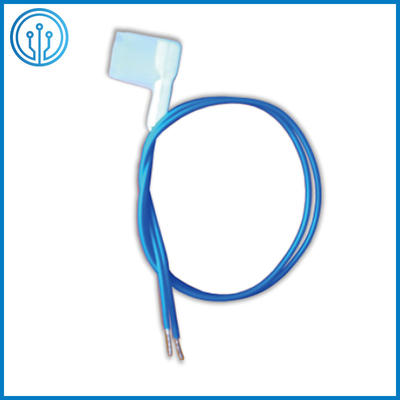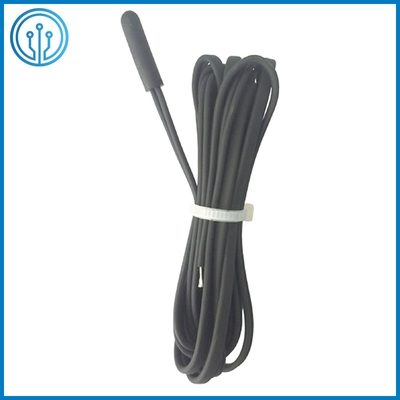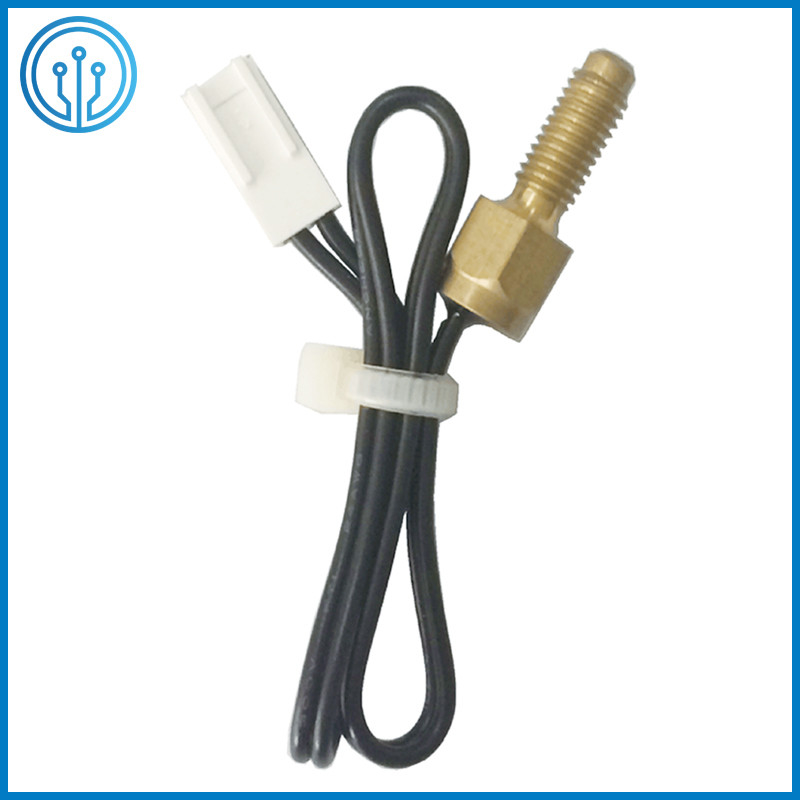M6 Brass NPT Screw Threaded 5k Ohm 3950 In Car Temperature Sensor
Product Details:
| Place of Origin: | DONGGUAN,GUANGDONG,CHINA |
| Brand Name: | AMPFORT |
| Certification: | ROHS |
| Model Number: | CWF 4 |
Payment & Shipping Terms:
| Minimum Order Quantity: | 1000PCS |
|---|---|
| Price: | TBA |
| Packaging Details: | Bulk |
| Delivery Time: | 10 workdays |
| Payment Terms: | T/T, Western Union, Paypal |
| Supply Ability: | 10,000,000PCS PER MONTH |
|
Detail Information |
|||
| Name: | Car In-car Temperature Sensor | Head Material: | Brass |
|---|---|---|---|
| Application: | Automotive Temperature Control Module | Installation: | Threaded Fixing |
| High Light: | 5k Ohm In Car Temperature Sensor,3950 In Car Temperature Sensor,Brass NPT Screw Threaded 3950 Thermistor |
||
Product Description
M6 Brass NPT Screw Threaded Car In-car Temperature Sensor 5k Ohm 3950
Working principle Of The In-car Temperature Sensor
The higher the interior temperature indicated by the interior temperature sensor, the more the hybrid door moves toward the colder direction, and the lower the temperature of the air outlet. Anyway, the lower the interior temperature indicated by the interior temperature sensor, the hotter the hybrid door becomes. Moving in the direction, the higher the temperature of the air outlet. The temperature sensor in the car is generally installed at the lower end of the dashboard. It is a thermistor with a negative temperature coefficient. The resistance of the thermistor will gradually decrease as the temperature rises. Its function is to detect whether the temperature in the car reaches the set value to control the work of the air-conditioning system.
Specification Of The In-car Temperature Sensor
| Name | NTC Temperature Sensor |
| Application | Automotive temperature control module |
| Installation | Threaded fixing |
| Housing Material | Brass |
| Cable | PVC,FEP,XLPE |
| Accuracy | 1% |
| Customized | Yes |
| Brand | AMPFORT |
| Origin | Dongguan,Guangdong,China |
| Manufacturer | AMPFORT |
Features Of The In-car Temperature Sensor
● Application description: Suitable for automotive internal temperature control module;
● Assembly method: Threaded fixation.
● The assembly method is simple and firm.
● The resistance value and B value can be determined according to customer needs.
● Hardware and wires can be customized.
Dimension Of The In-car Temperature Sensor (mm)
![]()
Method of detecting temperature sensor in car
(1) Voltage measurement
Remove the air conditioner controller, but the connector is not disconnected, turn the ignition switch to the "ON" position, use a multimeter to measure the voltage between the controller connection terminals TR and SG-3 (Figure 5-17), the measured voltage value Should decrease with the increase of temperature, the voltage should be 1.8~2.2V at 25℃, and 1.2~1.6V at 40℃.
(2) Resistance measurement
Remove the temperature sensor in the car and measure the resistance between terminal 1 and terminal 2 of the connector. The resistance should decrease with the increase of temperature. At 25℃, the resistance should be 1.65~1.75kΩ, and at 40℃, the resistance should be 0.55~0.65kΩ. If it is not normal, replace the temperature sensor in the car.
The in-car temperature sensor is also called the indoor temperature sensor. It is one of the important sensors of automatic air conditioning. It will affect the temperature of the air at the outlet, the speed of the blower, the position of the intake door, and the position of the mode door. It is usually installed in the suction device behind the dashboard.
Recommended Products Of The In-car Temperature Sensor
![]()
![]()
![]()
![]()
Test Item Of The In-car Temperature Sensor
| Test Item | Test Standard | Test method | Performance requirements |
| Zero Power Resistance | IEC 60539-1 | Immerse samples in the constant temperature bath at 25℃±0.005℃,test steady resistance |
Resistance tol ±1%
|
| B value | IEC60539-1 | Immerse samples in the constant temperature bath at 25℃,50℃(or 85℃), test steady resistance,and calculate B value |
Resistance tol ±1%
|
| Free fall |
IEC60068-2-32
|
Fall height: 1.5±0.1m,Surface: Cement , 1 time |
No obvious damage, R25 △R/R≤±1%
|
| Insulation |
IEC60539-1
|
500V pressure on insulation shell test insulation resistance |
>500MOhm
|
| Withstand voltage | IEC60539-1 |
Withstand voltage: 1500V/AC ,Leakage current:2mA Lasting: 60sec
|
No obvious damage
|
| Tension | IEC60068-2-21 |
Pull uniform speed at the end, F>4.0KG(requested by customer)
|
No obvious damage, R25 △R/R≤±1%
|
| Vibration | Q/HBm 108-94 | Test frequency: 10~500Hz,swing: 1.2mm acceleration: 30m/s2 Direction X,Y,Z Time:8Hour/direction |
No obvious damage, R25 △R/R≤±1%
|
| Steady humidity and heat | IEC60068-2-78 | Temp:40±2℃ Humidity:92-95%RH Time:1000±24Hour |
No obvious damage, R25 △R/R≤±1%
|
| Thermal time constant | EC60539-1 | Immerse in 25℃ water,after thermal balance,immerse in 85℃,resistance arrives 63.2%,calculate total time |
<10 sec
|
| High temperature storage | IEC60068-2-2 | Temp:125℃±5℃ Time: 1000±24Hour | No obvious damage, R25 △R/R≤±1% |
| Cold and thermal shock | IEC60068-2-14 |
-40℃~+125℃ T1:30min Cycle time:1000
|
No obvious damage, R25 △R/R≤±1%
|
| Knock experiment | IEC60068-2-77 |
Acceleration:250m/s2 Pulse lasting: 6ms Knock times: 1000 Recovery time: 2 Hour
|
No obvious damage, R25 △R/R≤±1%
|
| Low temperature storage | IEC60068-2-1 |
Temp: 40±2℃ Time: 1000±24Hour
|
No obvious damage, R25 △R/R≤±1%
|
| Salt spray | IEC60068-2-11 | Temp: 35±2℃ Collection hour : 1.0mL~2.0mL Time: determine per as actual demand | No obvious damage, R25 △R/R≤±1% |




